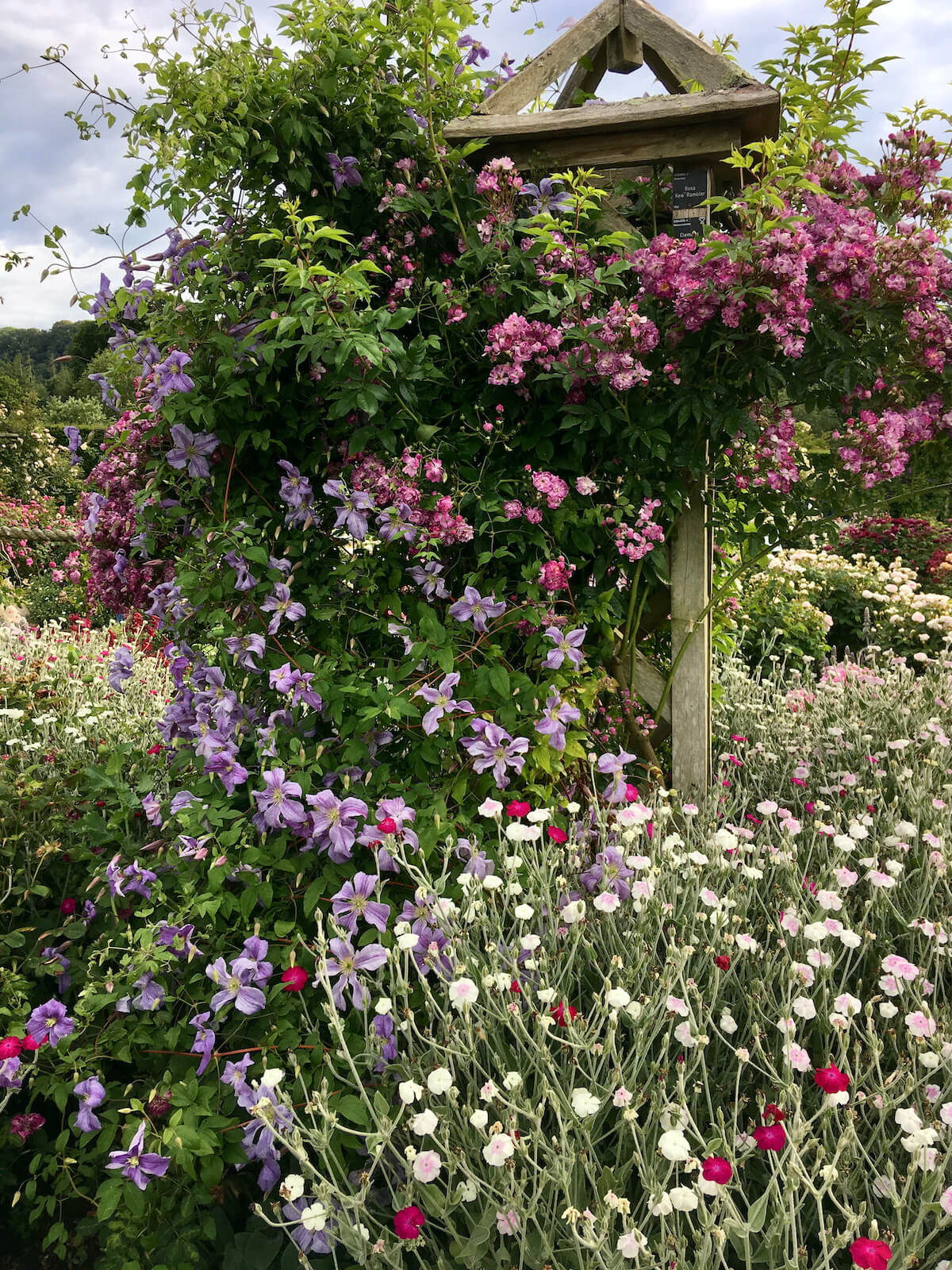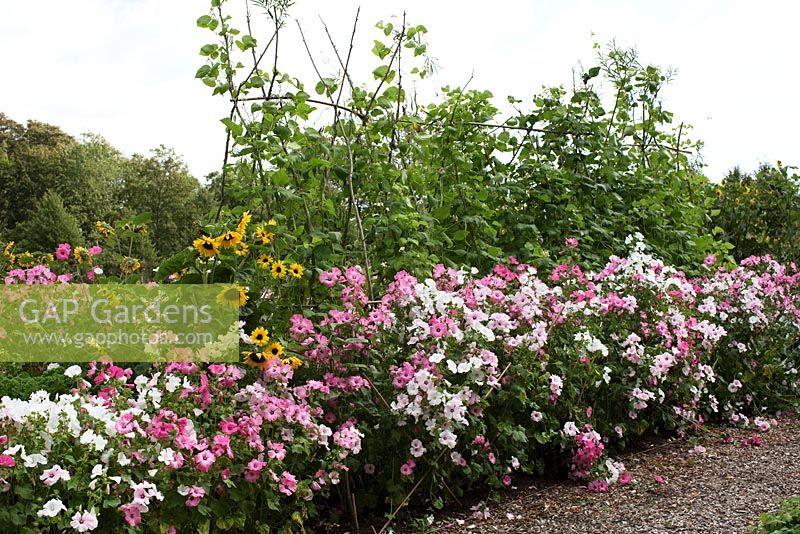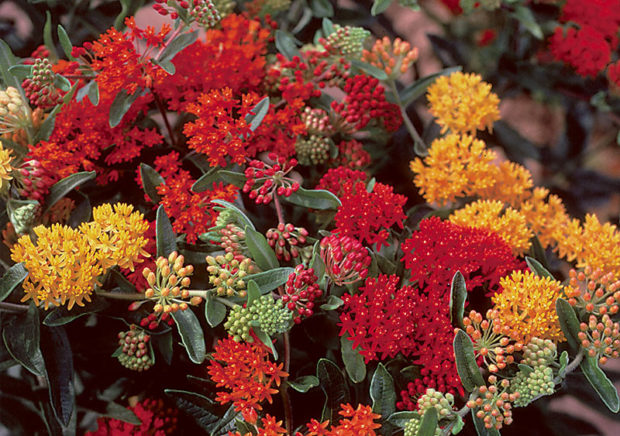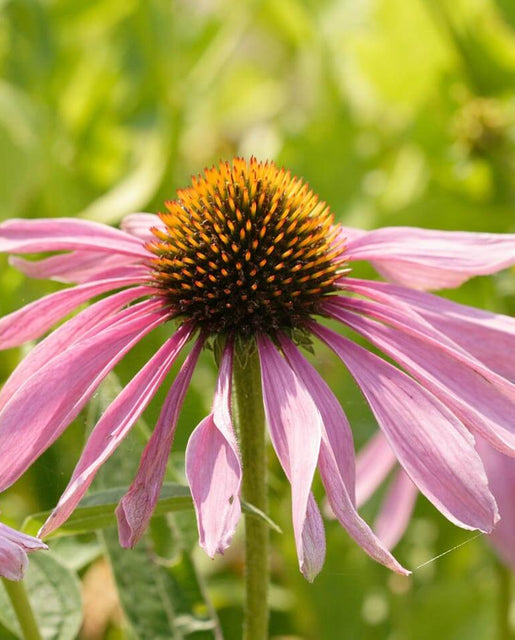Stunning Companion Plants For Lavatera
Lavatera is a genus of flowering plants in the mallow family, Malvaceae. They are known for their large, showy flowers that come in a variety of colors, including pink, purple, white, and yellow. Lavatera plants are relatively easy to grow and care for, and they make a beautiful addition to any garden.
One of the best things about lavatera plants is that they can be used to create stunning companion plantings. When choosing companion plants for lavatera, it is important to consider the plant's height, flower color, and growing conditions.
Here are some stunning companion plants for lavatera:
- Clematis: Clematis is a vine that can be trained to climb up or over a lavatera plant. The two plants will complement each other nicely, with the clematis providing delicate flowers and the lavatera providing bolder blooms.

- Hydrangea: Hydrangeas are another great choice for companion plants for lavatera. The two plants have similar growing conditions and will bloom at the same time of year. The hydrangea's large, showy flowers will provide a beautiful contrast to the lavatera's smaller blooms.
- Sunflowers: Sunflowers are a tall, sunny plant that can be used to add height and interest to a lavatera planting. The two plants will bloom at different times of year, so you can enjoy their beauty for most of the summer.
- Anemone: Anemones are a low-growing plant that can be used to fill in the spaces around a lavatera plant. The anemone's delicate flowers will add a touch of grace to the planting, and the two plants will bloom at the same time of year.

- Verbena: Verbena is a heat-loving plant that can be used to add color and interest to a lavatera planting. The verbena's small, star-shaped flowers will bloom all summer long, and the two plants will complement each other nicely.

- Lavender: Lavender is a classic companion plant for lavatera. The two plants have similar growing conditions and will bloom at the same time of year. The lavender's delicate purple flowers will provide a beautiful contrast to the lavatera's larger blooms.

- Roses: Roses are a popular choice for companion plants for lavatera. The two plants have similar growing conditions and will bloom at the same time of year. The roses' fragrant flowers will provide a beautiful contrast to the lavatera's bolder blooms.

When choosing companion plants for lavatera, it is also important to consider the plant's mature size. Lavatera plants can grow up to 6 feet tall, so it is important to choose companion plants that will not outgrow them.
With a little planning, you can create stunning companion plantings with lavatera plants. By choosing plants with complementary colors, heights, and growing conditions, you can create a garden that is both beautiful and harmonious.
Lavatera, also known as tree mallow, is a beautiful flowering plant that can add a touch of elegance to any garden. It is relatively easy to care for and blooms profusely in summer. If you are thinking of planting lavatera in your garden, you may want to consider companion planting. Companion planting is the practice of planting certain plants together to benefit each other. Some good companion plants for lavatera include:
- Roses: Lavatera and roses are both attractive flowering plants that can complement each other well. They have similar growing conditions and can help to attract beneficial insects to the garden. [Website address] has a great article on companion planting for roses, which includes lavatera as a recommended companion plant.
- Nepeta: Nepeta, also known as catmint, is a low-growing herb that can help to deter pests from lavatera. It also has attractive blue flowers that can add contrast to the lavatera's blooms. [Website address] has a detailed guide on growing and caring for catmint, including tips on how to use it as a companion plant.
- Blue salvia: Blue salvia is another flowering plant that can complement the colors of lavatera. It is also a good source of nectar for butterflies and other pollinators. [Website address] has a wealth of information on blue salvia, including growing tips, companion planting suggestions, and recipes for using the flowers in cooking.
FAQ of lavatera companion plants
Q: What are some good companion plants for lavatera?
A: Lavatera is a tall, flowering plant that can grow up to 6 feet tall. It prefers full sun and well-drained soil. Some good companion plants for lavatera include:
- Sunflowers: Sunflowers are tall, sunny plants that can help to support the weight of lavatera plants. They also attract pollinators, which can help to improve the flowering of both plants.

- Lavender: Lavender is a low-growing, drought-tolerant plant that can help to deter pests from lavatera plants. It also has a pleasant fragrance that can add to the beauty of your garden.

- Petunias: Petunias are colorful annuals that can add a splash of color to your garden. They also attract pollinators, which can help to improve the flowering of both plants.
- Zinnias: Zinnias are colorful annuals that are similar to petunias. They also attract pollinators and can help to improve the flowering of lavatera plants.

- Butterfly bush: Butterfly bush is a tall, flowering plant that attracts butterflies and other pollinators. It can help to improve the flowering of lavatera plants and also add a touch of beauty to your garden.

Q: How far apart should lavatera plants be planted?
A: Lavatera plants need plenty of space to grow. They should be planted at least 2 feet apart, or even more if you are planting tall varieties.
Q: How do I care for lavatera plants?
A: Lavatera plants are relatively easy to care for. They need full sun and well-drained soil. Water them regularly, especially during hot, dry weather. Fertilize them once a month with a balanced fertilizer.
Q: How do I propagate lavatera plants?
A: Lavatera plants can be propagated from seed or cuttings. Seeds can be sown indoors 6-8 weeks before the last frost, or directly in the garden after the last frost. Cuttings can be taken in the spring or summer and rooted in a well-drained potting mix.
Q: How do I prevent pests and diseases in lavatera plants?
A: Lavatera plants are generally resistant to pests and diseases. However, they can be susceptible to aphids, spider mites, and powdery mildew. If you see any pests or diseases, treat them immediately with an appropriate pesticide or fungicide.
Image of lavatera companion plants
- Lavender is a good companion plant for lavatera because it attracts pollinators, which help to fertilize the lavatera flowers. Lavender also has a calming scent that can help to deter pests from the lavatera plants.

- Salvia is another good companion plant for lavatera because it attracts pollinators and helps to deter pests. Salvia also has a long blooming period, which can help to fill in the gaps when the lavatera flowers are not in bloom.

- Zinnia is a cheerful and colorful companion plant for lavatera. Zinnias bloom in a variety of colors, which can help to complement the lavatera flowers. Zinnias also attract pollinators, which help to fertilize the lavatera plants.
- Coneflower is a tall and stately companion plant for lavatera. Coneflowers bloom in a variety of colors, including yellow, orange, red, and purple. Coneflowers attract pollinators, which help to fertilize the lavatera plants.

- Sunflower is a sun-loving companion plant for lavatera. Sunflowers bloom in the summer, which can help to extend the blooming period of the lavatera plants. Sunflowers also attract pollinators, which help to fertilize the lavatera plants.
Post a Comment for " Stunning Companion Plants For Lavatera"